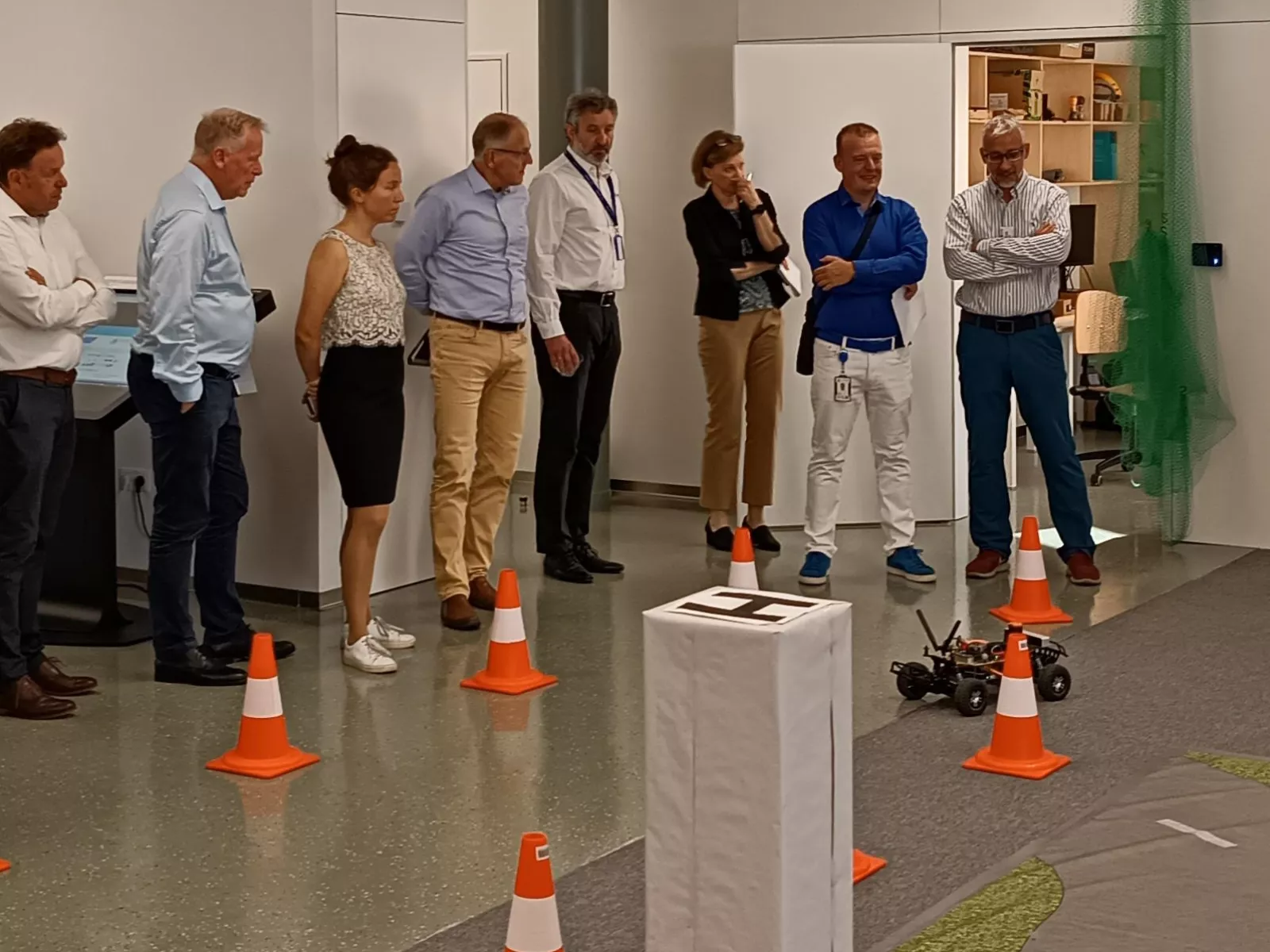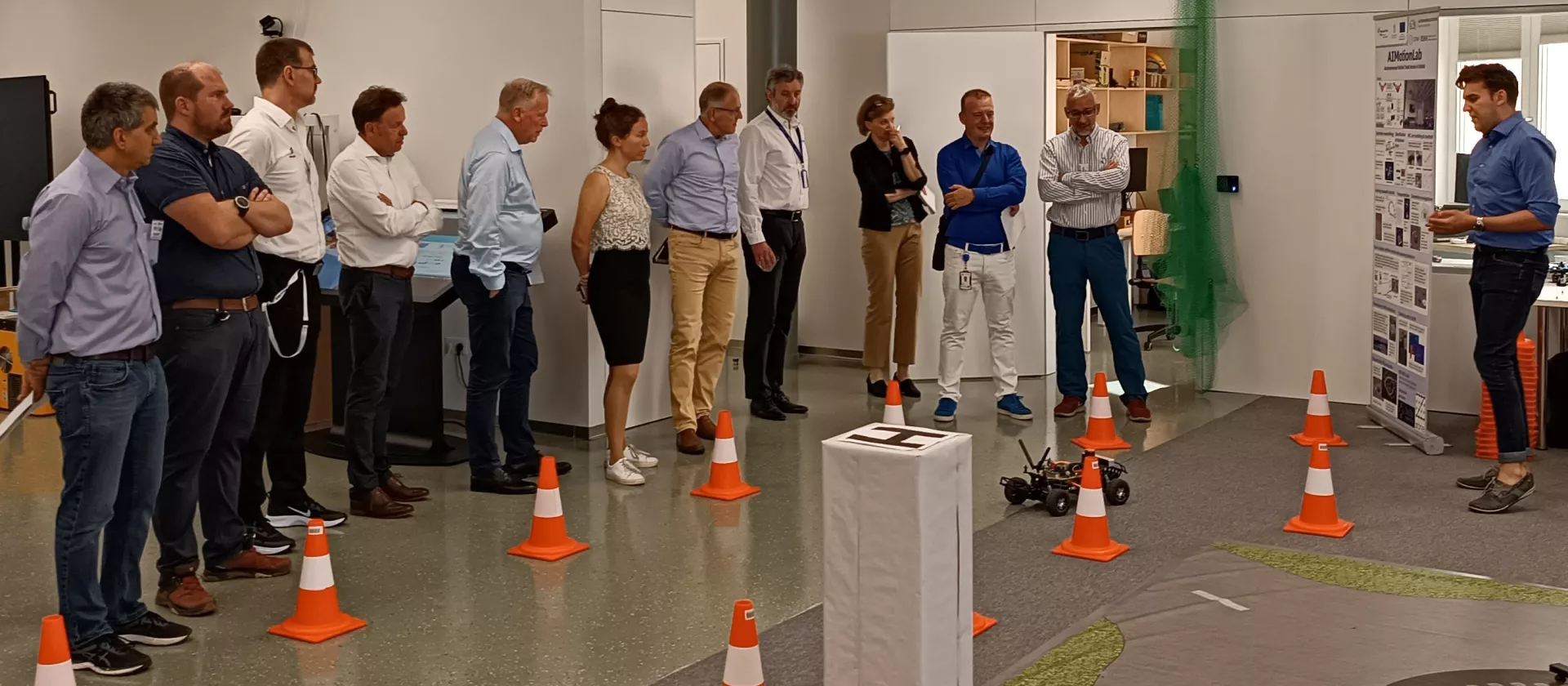
Between September 12th and 13th, we participated in an introductory and networking workshop aimed at providing SAAB and Ericsson's partners with an opportunity to introduce themselves and establish initial connections. SAAB is actively exploring the potential for academic collaborations in Hungary, and, as a first step, they collaborated with Ericsson Hungary to have key academic stakeholders in the fields of AI, autonomy, and transportation present their ongoing activities.
On the first day, András Benczúr and Péter Gáspár, scientific coordinators of the Artificial Intelligence and Autonomous Systems National Laboratories, highlighted the activities and accomplishments of the National Laboratories.
On September 13th, Bo Granbom, Jonatan Olofsson, and Marina Modeer Rantanen from Saab AI & Autonomy Research & Technology Cluster, Magnus Ahlström and Ewa Nowaczewska from Saab Global Innovation, Peter Dickman from Saab Aeronautics Industrial Co-operation, along with János Ritli, Country Manager of Saab Hungary, and Ericsson Research Hungary fellows, visited SZTAKI Innovation and Demonstration Space. During our visit, we engaged in discussions covering various areas of interest for the Saab AI & Autonomy Cluster team. These topics included AI for validation and verification, AI methods for physics/first principles modelling, digital twins, AI for Systems Engineering, AI trustworthiness, security, safety, accountability, knowledge representation, optimization for real-time requirements, data synthesis through simulation, and AI applications in production and resource management.
Following a welcoming address by László Monostori, director of SZTAKI, several laboratories showcased their research and applications:
- The Systems and Control Laboratory demonstrated autonomous drone navigation, aircraft wing shape estimation based on KalmanNet, a forerunner drone designed for the safety of first responders, and Husky UGV (Unmanned Ground Vehicle) for cooperative aerial-ground survey.
- The Machine Perception Laboratory presented a real-time surveillance application based on Livox Lidar and camera fusion.
- The Artificial Intelligence Laboratory showcased explainable modelling based on causal relations, solving engineering problems using machine learning, Bitcoin privacy analysis through network embedding, and an exploration of social challenges through the analysis of mobile service usage.
- The Laboratory for Parallel and Distributed Systems exhibited their vehicle data collection and visualization system.
- The Engineering and Management Intelligence Laboratory featured demonstrations highlighting AI and optimization in robotics applications, including autonomous pick-and-place robotics with digital twin, on-line, optimized and collision-free task sequencing and path planning, a portrait drawing robotic cell, and robotic remote laser welding.
This workshop served as an excellent platform for knowledge exchange and collaboration between SAAB, Ericsson, and academic partners in Hungary.
